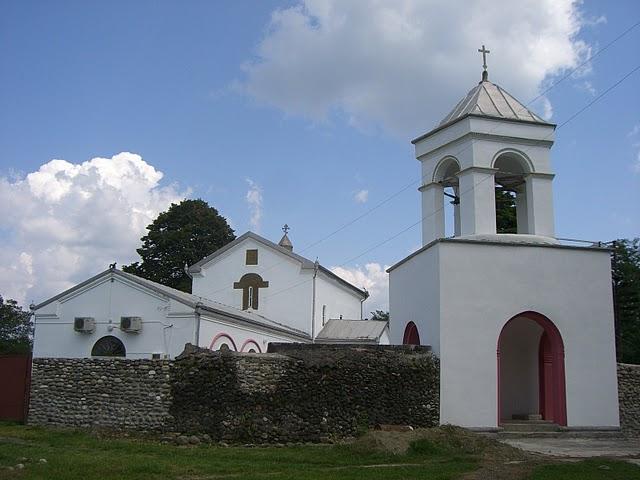
Ilor Temple
Ilor - is most revered temple for Abkhazians who want to visit St. George's church of XI century. The temple has one room with inner altar semicircle. The main room, floor stone vault on arches, rests on the protruding wall of massive pilasters is illuminated with five windows. The masonry exterior walls inserted several plates with a carved image of the cross. This temple stands out among the hall churches of Abkhazia not only for its size and consistency of architectural forms, but also art and design methods, claims in the first half of XI century. The proportions of the masses, the harmony of volumes, as well as application techniques dictated by the location of the building terms, brings him to the architecture of medieval Georgia.
One of the popular legends tells about the reasons that served as a pretext for the construction of Ilor Church: "A certain local prince in the forest during the hunt wounded deer. Fleeing the animal disappeared in the bush, a hunter followed him and the traces lead to the ruins of the ancient sanctuary. Prince saw a wounded deer with his head on the throne with a very tall cross at the altar, and realized that the animal is under the patronage of St. George. Prince left the victim and ordered to erect in this place the temple in honor of the Saint".
.jpg)
According to the Italian traveler Arcangelo Lamberti, who visited the Ilor Church in the first half of the XVII century, and the Italian Catholic missionary Castel, in the Middle Ages near the Ilor church arranged big fair, which attracts residents Abzhui of Abkhazia and other parts of western Georgia, bringing to agricultural products and crafts. Figures Catholic monk Castel displayed brisk trade scene near the Ilor Church.
The cult of St. George has long been intertwined with the cult of the bull here. And the Italian Arcangelo Lamberti left a description of the unusual ceremony. At Easter bull with gilded horns solemnly appeared in the church. After was then killed and eaten, it was thought that its meat has a healing power and stored fresh for months. On October 21 (old style), the day of St. George, the bull miraculously found himself in a specially sealed church. The mysterious appearance of a bull was attributed to the power of St. George's.

According to the Italian traveler Arcangelo Lamberti, who visited the Ilor Church in the first half of the XVII century, and the Italian Catholic missionary Castel, in the Middle Ages near the Ilor church was arranged big fair, which attracted residents Abzhui of Abkhazia.
The cult of St. George has long been intertwined with the cult of the bull here. And the Italian Arcangelo Lamberti left a description of the unusual ceremony. At Easter bull with gilded horns solemnly appeared in the church. After was then killed and eaten, it was thought that its meat has a healing power and stored fresh for months. On October 21 (old style), the day of St. George, the bull miraculously found himself in a specially sealed church. The mysterious appearance of a bull was attributed to the power of St. George's.

In the 20 years of the twentieth century the temple was closed, which, however, had no impact on his popularity among the pilgrims. Even in those years did not stop here worship.
Ilor Church always had a wealth of interior decoration. The sacristy houses a collection of gold and silver liturgical vessels, altar-a massive bowl of gold donated by Bedia temple of King Bagrat III, the silver triptych depicting holy warriors Dmitri, George and Theodore.
Especially revered by the people of the two forged silver miracle-working icons, which donated the church Mingrelian Prince Levan Dadiani. Oath in front of them was considered sacred and inviolable.
They say that if you pray for something in Ilor Church it will come true!












